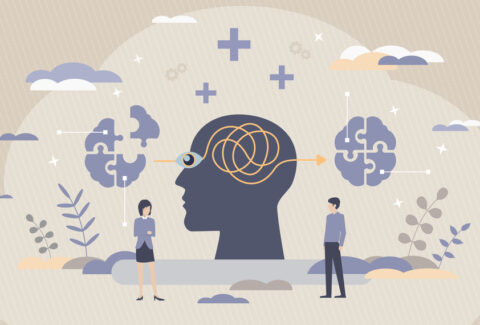Healthy Schema Modes
In the symphony of human emotion, the notion of dwelling exclusively in one healthy mode may seem like a lofty aspiration. Yet, the pursuit of emotional mastery involves a nuanced dance between various healthy schema modes—a dynamic choreography that adapts to the ever-shifting landscapes of life. Let us delve into the art of navigating these modes, cultivating resilience, and embracing the complexity of our emotional tapestry.
The Myth of Emotional Monotony
Imagine a world where a single emotional note plays endlessly, unyielding to the ebb and flow of life. Such monotony may appear serene, yet it lacks the richness and depth inherent in the human experience. Emotional health is not about rigid constancy but rather the ability to traverse a spectrum of healthy modes[1], each contributing to the vibrant mosaic of our emotional lives.
The Dominant Healthy Mode: A Guiding Light
While the exclusive embrace of one healthy mode might be elusive, cultivating a dominant healthy mode becomes a guiding light on the journey to emotional well-being. This may involve nurturing the qualities of the Healthy Adult[2]—the mode grounded in rationality, self-soothing, and effective problem-solving.
Flexibility: The Essence of Emotional Adaptability
The heart of emotional mastery lies in flexibility[3]. Healthy individuals exhibit the capacity to move seamlessly between modes, drawing upon the assertiveness of the Angry Protector when needed or basking in the joy of the Happy Child during moments of celebration. This adaptability is a testament to emotional resilience.
Integrating Multiple Healthy Modes: A Holistic Approach
Rather than a singular pursuit, the path to emotional health embraces the integration of multiple healthy modes. The Compassionate Parent may offer solace and support, while the Assertive Adult navigates the challenges of daily life. This holistic approach fosters a comprehensive emotional repertoire.[4]
Awareness: A Beacon in the Emotional Landscape
The cornerstone of navigating healthy schema modes is awareness—a keen understanding of one’s emotional landscape. This self-awareness allows individuals to discern when a shift in modes is adaptive, aligning with the demands of the moment, and when it may veer toward maladaptive patterns.[5]
Therapeutic Guiding Lights: Schema Therapy Unveiled
Enter Schema Therapy[6], a therapeutic beacon illuminating the intricacies of schema modes. Therapists guide individuals in recognizing maladaptive patterns, fostering the growth of healthy modes, and integrating them into the fabric of daily life. The therapeutic journey becomes an exploration of self-discovery and transformation.
Mindfulness: The Art of Being Present
In the tapestry of emotional mastery, mindfulness[7] practices emerge as brushstrokes of serenity. Techniques such as mindfulness meditation encourage a present-moment awareness, allowing individuals to navigate their emotional modes with grace and acceptance.
The Harmonious Tapestry: Resilience Unveiled
As individuals traverse the realms of healthy schema modes, they weave a tapestry of resilience—a testament to the art of emotional mastery. The ability to respond to life’s varied cadences with a harmonious blend of assertiveness, nurturing, and joy becomes a celebration of the human spirit.
In the grandeur of emotional mastery, the pursuit is not perfection but rather a dynamic dance—an ever-evolving symphony of resilience, adaptability, and self-awareness. It is an exploration that invites individuals to embrace the richness of their emotional tapestry, weaving a narrative that resonates with the beauty inherent in the complexity of being human.
Schema Therapy[8] offers a solution where Cognitive Behavioral Therapy may have fallen short. It integrates various evidence-based practices, including attachment theory, psychodynamic psychotherapy, mindfulness, and Gestalt therapy. This holistic approach blends the best of each method to engage clients effectively.
[1] Yakın, Duygu, and Arnoud Arntz. “Understanding the reparative effects of schema modes: an in-depth analysis of the healthy adult mode.” Frontiers in Psychiatry 14 (2023): 1204177.
[2] Aalbers, George, et al. “The network structure of schema modes.” Clinical psychology & psychotherapy 28.5 (2021): 1065-1078.
[3] Alokandeh, Roghayeh Sotoudeh. “Enhancing Emotion Regulation and Psychological Flexibility, and Body Image Concern in Girls with Body Image Dissatisfaction Through Schema Modes Therapy.” Journal of Assessment and Research in Applied Counseling (JARAC) 6.2 (2024): 177-184.
[4] Edwards, David John Arthur. “Using schema modes for case conceptualization in schema therapy: an applied clinical approach.” Frontiers in Psychology 12 (2022): 763670.
[5] Farrell, Joan M., and Ida A. Shaw. Experiencing schema therapy from the inside out: A self-practice/self-reflection workbook for therapists. Guilford Publications, 2017.
[6] Edwards, David John Arthur. “Using schema modes for case conceptualization in schema therapy: an applied clinical approach.” Frontiers in Psychology 12 (2022): 763670.
[7] Vago, David R. “Mapping modalities of self‐awareness in mindfulness practice: a potential mechanism for clarifying habits of mind.” Annals of the New York Academy of Sciences 1307.1 (2014): 28-42.
[8] Young, Jeffrey E., Janet S. Klosko, and Marjorie E. Weishaar. “Schema therapy.” New York: Guilford 254 (2003): 653-658.







